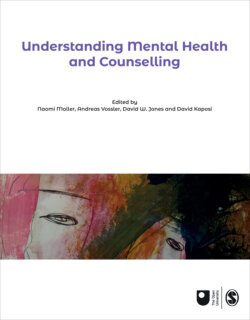Читать книгу Understanding Mental Health and Counselling - Группа авторов - Страница 13
На сайте Литреса книга снята с продажи.
2.2 Moral insanity and criminological expertise
ОглавлениеThe earliest signs of the formal recognition of categories of ‘insanity’ come from processes of legal justice. For as long as we have written records, we know that systems of justice have recognised that those who were deemed to be suffering from insanity ought to be treated with some leniency (Walker, 1968). While the principle was recognised across time, there has been a long debate about how insanity might be reliably detected. The claim of expertise in this territory became an important facet of the case for recognition of the profession of psychiatry. Some of these developments are described in Chapter 18. For the purposes of this chapter we observe a series of initiatives in Germany, France, Britain and the US that aimed to define disorders of the mind that might be associated with criminality (Jones, 2016). Particular claims were made about ‘monomanias’, ‘partial insanity’ and moral insanity. These all emerged from the idea that the mind could be understood as an object of exploration, and that it was possible to identify particular aspects of the mind that might be disordered in a way that could lead to criminality and violence.
Moral insanity A term used in the nineteenth century to refer to a supposed psychological disorder that was associated with antisocial and criminal behaviour.
Despite some success in the courts, these ideas were considered too radical when debated in the public arena, fuelled by the relatively new phenomenon of a widespread and popular press. The newly formed profession of psychiatry moved away from these more nuanced psychological ideas and back towards their medical and physiological roots (Jones, 2017b). By the 1860s an unfortunate alliance was made between the new profession’s need to profess expertise in the field of criminality and ideas about the significance of hereditary. The latter were given a new respectability thanks to Charles Darwin’s On the origin of species (published in 1859). What emerged was a rather eugenical turn as assumptions were made about the heritability of criminality among an apparent underclass. These played out in programmes of confinement and sterilisation, most notably in the US (Rembis, 2011), leading up to their catastrophic use by the Nazi regime in the middle of the twentieth century (Breggin, 1993).
One important consequence of the medical profession’s shift away from the psychological realm was that the ground of psychological enquiry became available to other professions for developing theories and treatments of the mind. As Chapter 3 will explore, it was initially psychoanalytic ideas, instigating the ‘talking cures’, that opened a new domain of psychological methods of investigation and treatment. To an extent a split was established between the medical specialism of psychiatry – which has tended to maintain a strong allegiance to the medical model – and those who have sought the further exploration of ‘psychological’ treatments. The boundaries are porous, however; while the roots of psychiatry are firmly embedded in the world of physiology, the profession has also been significantly shaped by the belief in a ‘mind’ that is amenable to treatment (Jones, 2017a). At the same time, the assumptions of the medical model – that there is an illness located within the body (including the mind) of the individual – are quite widely accepted within the world of mental health, including in many models of counselling.
Medical model The idea that physical and mental difficulties experienced by an individual can be understood in terms of an identifiable disorder existing within that individual.
